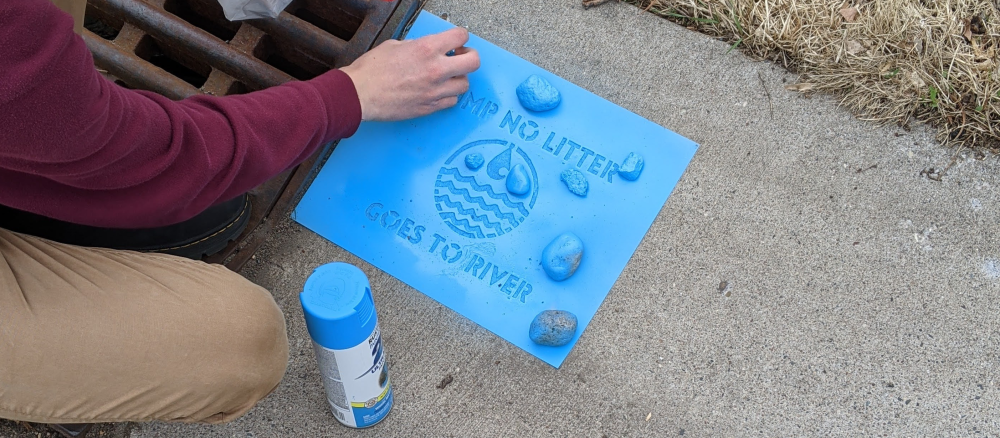Ever since Liz Perelman was little, they had a habit of running straight into any water they would see, picking up frogs and making soups out of gunk.
As a recent graduate from the School of Environmental Studies in Apple Valley, Perelman’s draw to water hasn’t waned. For their senior project, Perelman joined with nine other students in their school to start the Minnesota Mussel Movement. The project encouraged people of all ages to “get musscular” and learn about the importance of native freshwater mussels, as well as the threats mussels face from human activity, such as pollution and dams.
It was the large body of water right near Perelman’s home that inspired them to make a difference through this project. Despite growing up in Champlin near the Mississippi River, Perelman rarely spent time in the water; it didn’t seem clean to them. They began to reflect on how their own neighborhood contributes to the pollution in the Mississippi.
Perelman got another idea for a water stewardship project during the COVID-19 lockdown. They spent a lot of time walking their dog in the neighborhood and noticed that a drainage pond nearby was algae-ridden. They called up their friend Brayden, who designed a stencil to remind residents that what goes down the drain goes directly to the Mississippi River. In bright blue, they painted the stencil in front of every storm drain in the neighborhood.
“We had people that gave us weird looks, because it looked like two teens vandalizing the road,” Perelman says. “But then others looked deeper and saw we were actually doing good.”
Perelman has started to see a few people going out with brooms to sweep away debris collected by the drains.
“Whether or not that’s because of my stencil I don’t know,” Perelman says. “But it’s a good thing that is happening.”
Visit the exhibit
Perelman shared their story as a part of We Are Water MN, a traveling exhibit and community engagement program that explores Minnesotans’ relationships with water. Dakota County is hosting the exhibit and related programming in partnership with the Dakota County Soil and Water Conservation District, Vermillion River Watershed Joint Powers Organization, Dakota County Library, and Dakota County Parks.
You can listen to Perelman’s story — and other local stories — at the exhibit. The exhibit also explores water challenges Dakota County faces and the ways that local community members are working together to restore and be stewards of the groundwater, rivers, lakes, and wetlands in the county.
Visit the exhibit through December 5 at the Pleasant Hill Library, 1490 S. Frontage Rd, Hastings, MN 55033. It’s open Monday to Thursday from 9 a.m. to 8 p.m., Friday and Saturday from 9 a.m. to 5 p.m., and Sunday from 1 to 5 p.m. Lebanon Hills Regional Park Visitor Center, 860 Cliff Road, Eagan, MN 55123, will also have an outdoor version of We Are Water MN on display at the park.
Events and activities
Dakota County and their partners have several events planned in conjunction with the exhibit, including:
- Hastings drinking water treatment plant tours, October 20 and November 17
- MPCA Smart Salting for Parking Lots and Sidewalks Certification Training, October 20
- Nitrate clinic for private well owners, October 27, 4:30-6:30 p.m.
- Story Trail: We Are Water Protectors, at parks throughout October
- Storytelling and collage, October 25, November 2, and November 3
About We Are Water MN
We are Water MN is led by the Minnesota Humanities Center in partnership with the Minnesota Pollution Control Agency; the Minnesota Historical Society; the Minnesota Departments of Agriculture, Health, and Natural Resources; and University of Minnesota Extension.
The program is funded in part with money from the Clean Water, Land & Legacy Fund — which was created with the vote of the people of Minnesota on November 4, 2008 — and by the National Endowment for the Humanities.
